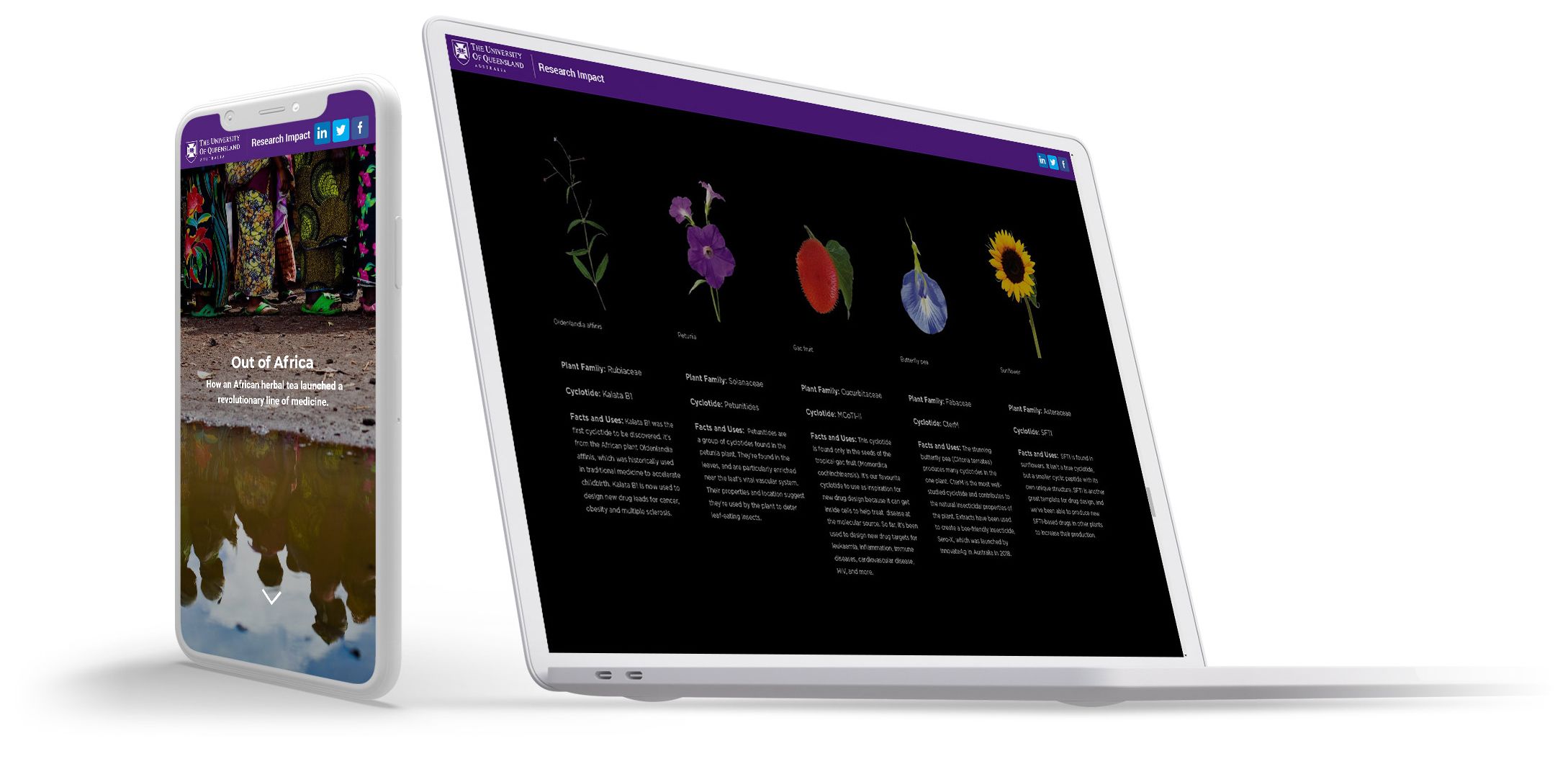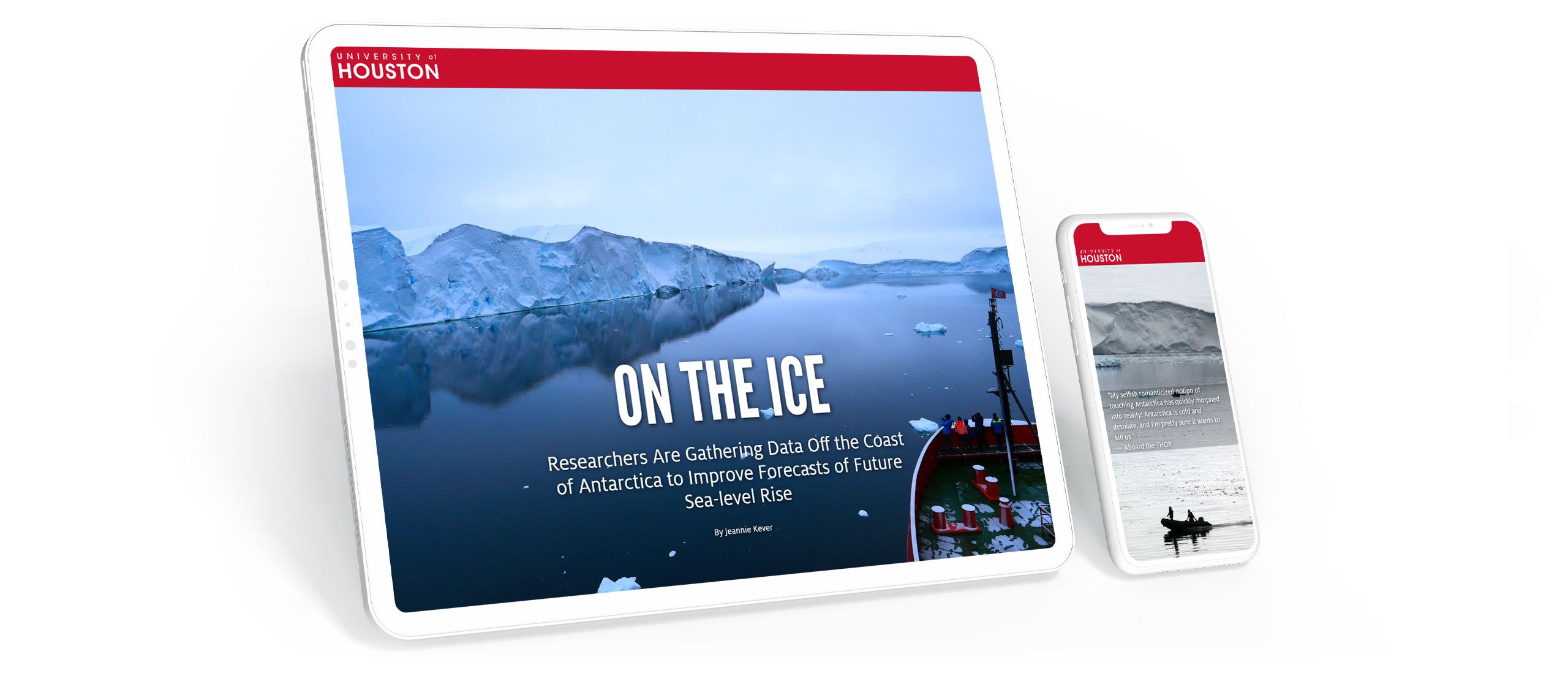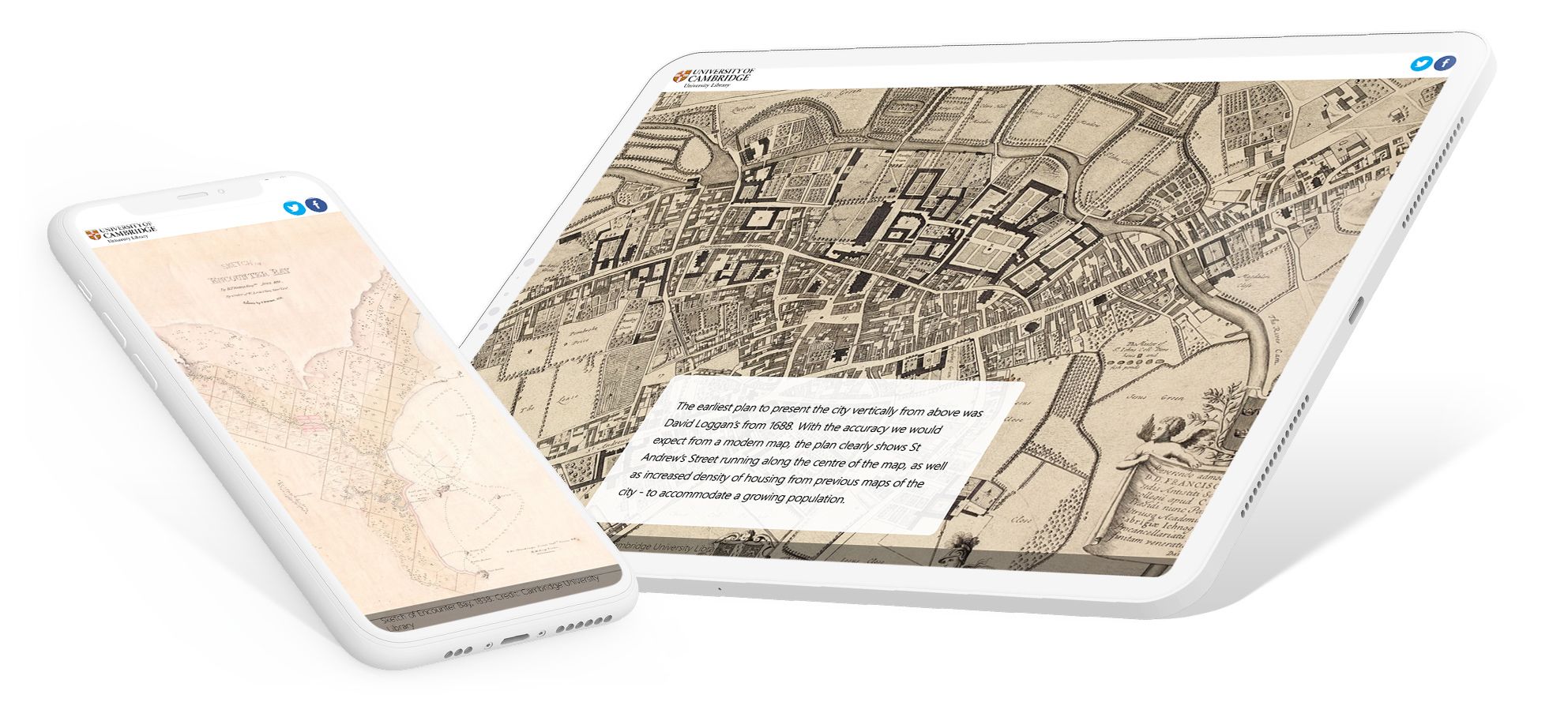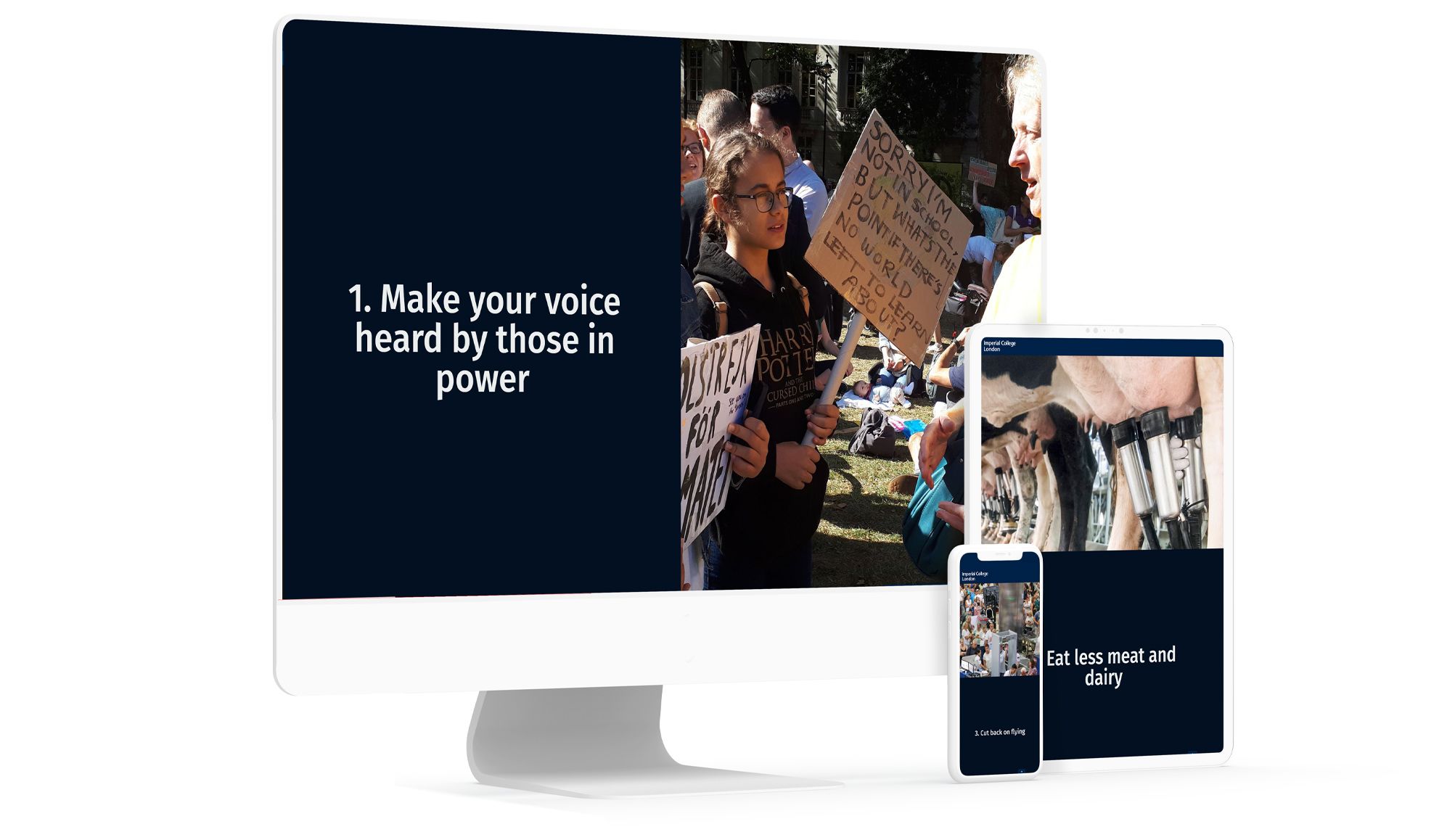Most academic research has no impact. Can storytelling help?

With digital storytelling, communications and marketing teams can get better results for their institution and their researchers.
Last year, academics from around the world published close to two million journal articles — with the vast majority receiving few downloads and scant citations.
This research came at an enormous cost to the general public. While it’s hard to get precise numbers, the US Federal Government alone spends over $42 billion per year on academic research and development.
Why don’t we know more about this research? Why doesn’t it have more of an impact?
What do the BBC, The University of Cambridge, and Penguin have in common?
They craft stunning, interactive web content with Shorthand. And so can you! Publish your first story — no code or web design skills required.
Sign up now.
The potential for research communication
There are a couple of reasons. First, specialist research is difficult to understand. Each field has its own arcane language, grammar, and style, as well as an enormous amount of assumed knowledge. It’s not easy for an outsider (like myself) to pick up an academic paper and understand its significance.
Second, most research is literally inaccessible. Published behind expensive paywalls, most papers aren't open access and can’t be read by members of the public (even alumni with degrees in that subject).
This is a problem for public policy — but it’s an enormous opportunity for marketing and communications teams at colleges and universities.
Every institution has a vast untapped archive of published research that has gone through peer review, most of it much more interesting and useful than its download or citation count would suggest.
As we outline in our introduction to science communication, this research — from not only the sciences, but from every area of research, including the social sciences and humanities — can form the basis of powerful public communication. This can reach new and different audiences, and as we explain below, can contribute to a better understanding of the most critical issues facing our planet.
Digital storytelling and research communication
Of course, this isn’t a new idea. There is a long history of popular research communication, from Francesco Algarotti’s Newtonianism for the Ladies from 1773 — which popularised Newton’s ideas in Europe — to modern classics like Stephen Hawking’s A Brief History of Time.
What is new, though, is how these stories are being told on the web.
With the rise of digital storytelling platforms, we’re seeing truly interactive stories that utilise the latest in web technologies. These stories are rich in media — including photography, illustrations, video, and maps — and can be experienced on all devices.
Let’s look at an example from one of the leaders in digital storytelling for research communication, The University of Queensland.
Out of Africa looks at how UQ Professor David Craik changed the world’s understanding of peptides, a crucial component of many modern medicines.
By publishing this piece, the team at UQ have introduced the research into peptides and cyclotides to a much wider audience. It's a great example of public outreach.
Why is this so important? Let’s take a closer look, with seven reasons universities should invest more in digital stories about research.
1. Your alumni care about research

Let’s face it — the way higher education works is… strange. After four or more years of study in a specialist major or concentration, the vast majority of graduating students become virtually cut off from reading about research in their field overnight.
But this doesn’t mean they don’t care. While the job market often carries people into completely unrelated fields, most alumni remain deeply interested in the subjects they studied at college or university.
Most alumni, though, don’t have the time or inclination to read dry summaries of research. This is where digital storytelling can help. Great digital stories can re-engage alumni, expanding the research community and reminding them of the important work being done at your institution.
2. Give your faculty a platform

Researchers are great at research projects, but they’re not typically great at public communication or self promotion (even if they have great communication skills in the classroom). This is a shame, as the perception of your faculty is tightly coupled — for good reason — with the perception of your institution as a whole.
What is to be done? One approach is to give researchers introductory media training and proactively connect them with journalists. This is the approach taken by the network of Science Media Centres in the UK, Australia, and New Zealand, and it has demonstrably led to more accurate science reporting.
Unfortunately, the number of journalists in mass media assigned to research and science is vanishingly small, and only a handful of research topics are newsworthy enough to get covered.
The solution is to do it yourself. With modern storytelling platforms, universities and colleges can produce content that is as well-written and visually compelling as the best feature stories on the web. By controlling the entire publishing process, you can ensure quality and accuracy, and promote the research published by your faculty on your own terms.
As you can see from this story from the University of Houston, the results can be stunning.
If you're looking for more examples and inspiration, check out our guide, 8 examples of powerful data stories.
3. Showcase the scope of your research

Universities contain multitudes, with large research institutions employing hundreds or thousands of researchers, each with their own specialist sub-field. Most of this activity is invisible to the public, with only a handful of departments and academic stars rising to great prominence.
This complexity can be daunting — but it’s a great opportunity for marketing and communications teams, who should aim to showcase as much of this diverse research as possible.
Some forms of research communication will include discussions of the research process — including research questions, methodology and datasets — while others will take a more introductory approach.
Take, for example, Cambridge University, which has embraced digital storytelling across the institution — from Queen’s College creating digital stories for its virtual conference to the library’s stories about its impressively extensive collections.
4. Digital storytelling makes for better marketing

Typically, digital stories with rich digital media are ‘stickier’ than ordinary stories published on the web. People stay on the page for longer; they pay closer attention to the content; and — depending on how the story is structured — they can be more likely to click through to other content.
They are also better for sharing and dissemination on social media, with metadata — including images and descriptions — that comply with the Open Graph standard used by social networks like Facebook and Twitter.
The numbers don’t lie. After a year of publishing digital stories with Shorthand, Imperial College London experienced 42% higher average unique pageviews and 50% higher average time on page.
With stories like 9 things you can do about climate change, you can see why.
5. Students care about research

Students go to university for three reasons: to learn; to get a credential; and to have a great time. Often, university marketing focuses on the latter two reasons, and undersells the first.
As hard as it is to believe — and as unlikely as it seems in a sleepy lecture theatre — students (and not just graduate students) actually want to learn about and better understand the latest research in their field. Believe it or not, they are even inspired by new ideas.
It’s easy for faculty to become cynical about the motivations of students, but that cynicism has no place in the public marketing of the university. By investing in better research communication, the institution can show its best, most idealistic face to the students it wants to attract.
6. It’s better for our society, economy, and planet

Let me state the obvious: Despite an enormous investment in research, we live in a golden age of misinformation. This comes at an enormous cost, with the prevalence of hoaxes, conspiracy theories and outright lies having a profound impact on our future.
Our biggest challenges — from global healthcare to sustainability and climate change — can’t be solved without the public having a basic understanding and acceptance of research findings.
Researchers can’t solve this problem on their own, but research institutions can contribute to the solution with better research communication. As outlined above, research communication is great for university marketing and branding. But research communicators also contribute to a more informed public — which, these days, can only be a good thing.
7. Funders are starting to care about real-world impact

To anyone outside the research system, this final reason might seem a little strange, as it implies that research funders have not historically cared all that much about impact — outside of the reputation and prestige of academic publications.
But it’s true: On the list of criteria some research funders have for providing grants, public communication of impact — including social, economic, and environmental impact — hasn’t been near the bottom. It hasn’t even been on the list to begin with.
It’s early days, but there are signs that this is starting to change. Alongside the movement for open access, there have been small but significant calls to broaden the criteria for what counts as research and professional excellence.
With this in mind, it makes sense for universities and colleges to do their best to invest in research communication that broadens the reach of published research, and increases its chances of having an impact in the world.
Conclusion

Teams working in university marketing and communications have a difficult job. Universities are notoriously siloed and complex places, and it's almost impossible to comprehend — let alone communicate — the diverse activity that takes place within their walls.
Our advice is to embrace the complexity. Talk to as many researchers as you can. Get them to explain their research. Tell their stories.
And to get the best results, try media-rich digital storytelling. As we’ve shown, it turns out that by magnifying the impact of their research with digital storytelling, universities can benefit across the board — including student and faculty recruitment, alumni engagement, and institutional reputation.







